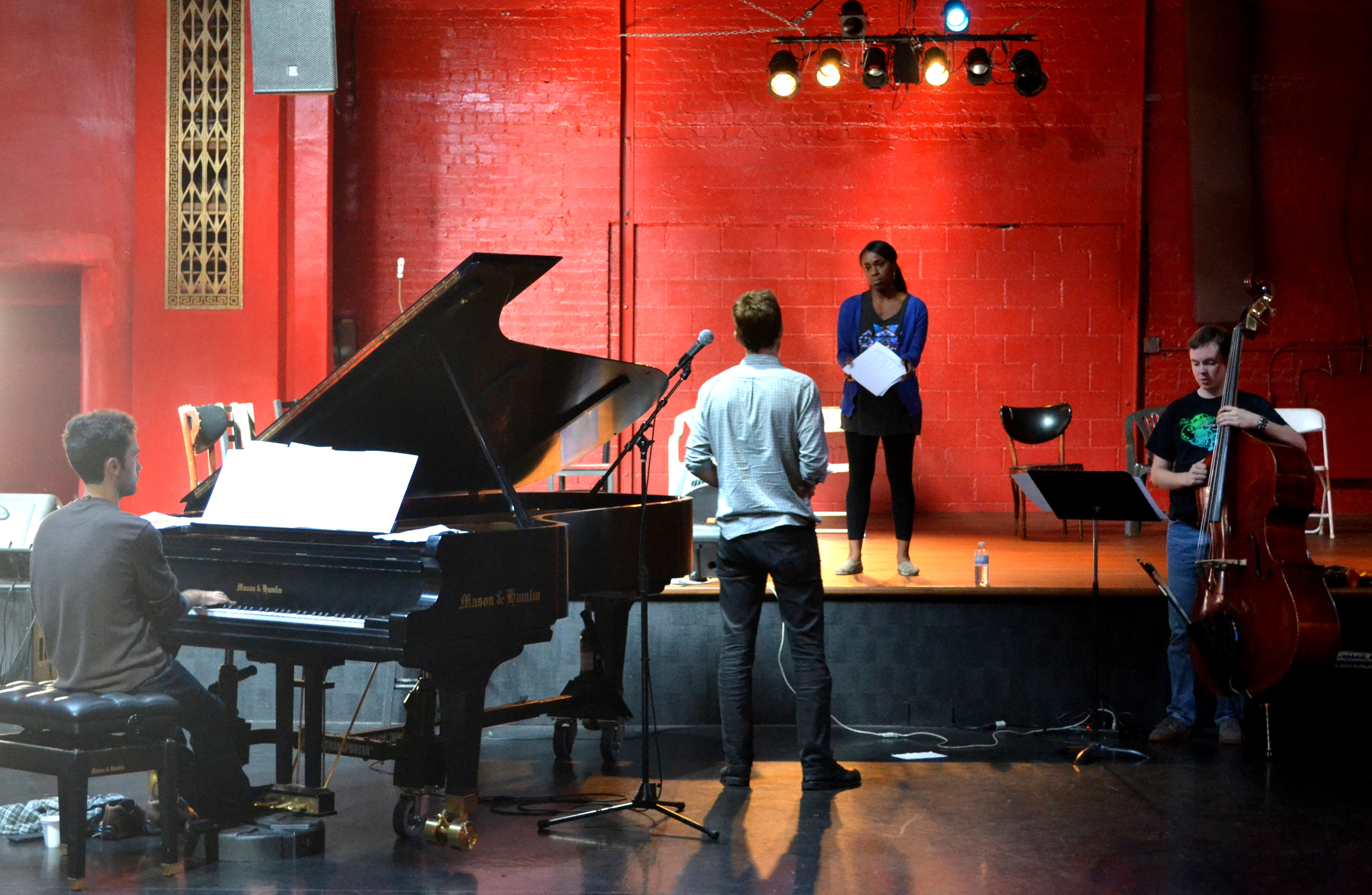To create a jazz opera, combine one dead soldier, a 7-part jazz ensemble and 18 stanzas of World War I poetry under a cobweb tent; allow improvisation to follow.
UCLA alumni Nick DePinna, Hitomi Oba, Jerome Parker and Sean Pawling will present act one of the jazz opera, “Strange Fellowe” through improvisational jazz, R&B singing and traditional acting at the Fais Do-Do Ballroom in Mid-City today through Saturday. After the performance, the bar will open and the band will perform musical selections from acts two and three.
“Strange Fellowe” is about Talas, the ghost of a German soldier who is unaware that he died in battle. Talas, played by Anderson Davis, wanders the German countryside and falls in love with a girl named Rachel, played by Kristolyn Lloyd. However, a character known as The Band Leader, played by Pawling, attempts to counter their relationship.
The jazz ensemble consists of a piano, drums, bass, synth and three saxophones, said saxophone player and co-creator Oba. The saxophone section, which will include Oba, will act and sing alongside the actors.
“The (actors and saxophone players) will sing a cross between pop, R&B and jazz styles,” said trombonist and co-creator DePinna, who will be playing the synth. “We’re trying hard to make the music come at you from all angles.”
Librettist and producer Jerome Parker said the team began collaborating on the project four years ago, while attending graduate school at UCLA.
Oba and DePinna said they knew they wanted to create a jazz opera after completing a course by acclaimed jazz professor Kenny Burrell. Part of the appeal was that the jazz opera medium has yet to be established, DePinna said.
“I can’t remember exactly what the idea started out as,” DePinna said. “We had a dark, mysterious character that was searching in an ethereal world … It took us four years to say … he was a ghost.”
DePinna and Oba, who played jazz together since high school, had difficulty turning their ideas into a story until they befriended Parker, Oba said. They played Parker a clip of Oba’s music and gave him a copy of the poem that inspired the idea.
“When Nick and Hitomi told me (they needed help with) a jazz opera it … made my artistic bones twitch,” Parker said.
The poem was Walter de la Mare’s “The Listeners,” which tells the story of a phantom-like figure who wanders door to door asking questions. Parker said the poem moved him, and he decided to use Mare’s poetry to create the jazz opera’s lyrics, dialog and characters.
“I love finding new ways to convert (classics) for modern-day audiences,” Parker said. “If you present it in a … fresh way, I think people will come at it with an open eye, ready to receive.”
The audience will sit on opposite sides of the ballroom, which is large enough for 200 people, Parker said.
The performance will take place in the center of the dance floor next to a large wall of mirrors, and will not use a traditional stage.
“We’re breaching the fourth wall, and putting everybody in the same space as the actors,” Parker said.
Set designers will enclose the ballroom in a web-like fabric, causing audience members to feel like they are entering another world, Parker said. Rather than using traditional props to convey the location, videographer Adeline Newmann will project images, animations and clips of black and white World War I footage onto the fabric walls. Parker said this will have the effect of moving the audience to a different location.
Oba said the hardest part of producing “Strange Fellowe” was not creating the music or the story, but collaborating with the 20-person team, which has a director in Seattle, a librettist in Brooklyn and set designers in Los Angeles.
DePinna said “Strange Fellowe” uses neither traditional jazz nor opera styles, but instead focuses on the nuances of combining the two.
“This isn’t tailored for die-hard jazz fans,” DePinna said. “We are hoping to see a broader audience and people who want to experience an unconventional combination of forms.”
